“Weber, we are not white, we are not black; we are people”
Emeritus Professor Roy Edwin Weber’s story is not just about half a century of internationally recognised achievement within the field of zoophysiology. It’s also a story about what makes a man who he is, and of how that man managed to preserve his integrity in the face of the arrogance and stupidity which leads to oppression of others.
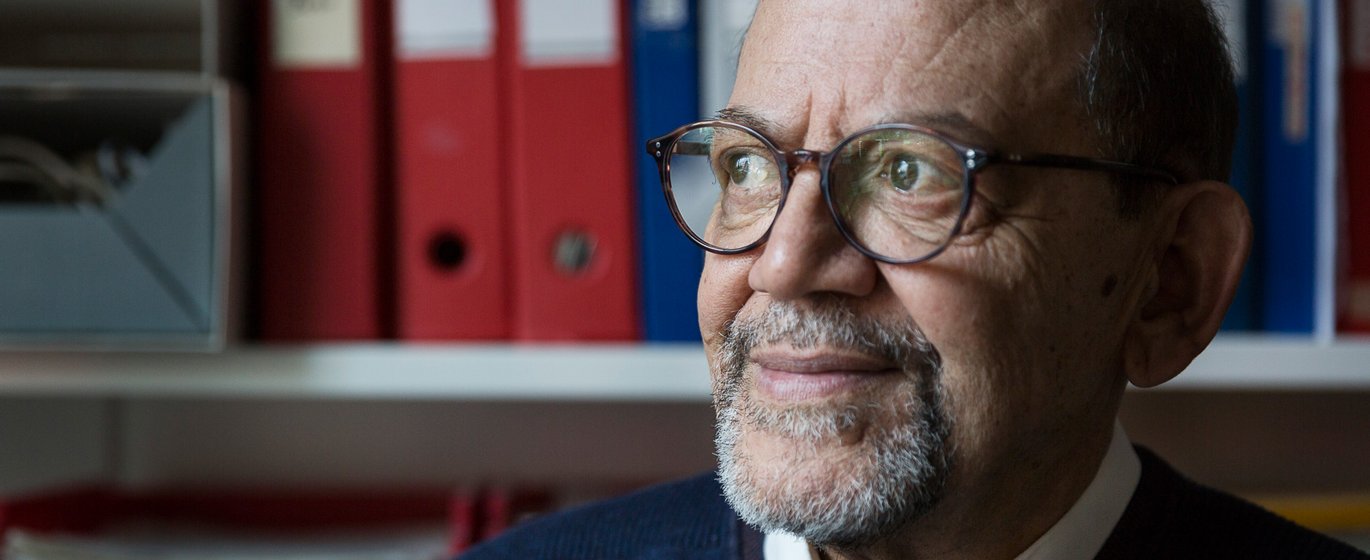
Emeritus Professor Roy E. Weber’s research
Emeritus Professor Roy E. Weber carries out basic research on the mechanisms in the blood of animals – mechanisms which supply the body with oxygen. Weber’s research has produced insights which can be used in applied research. For example to improve the treatment of patients with poor lung function.
Birds
Weber has explored how the circulatory system work in animals who live under extreme conditions in nature. For example, he has studied birds which fly at an altitude nine of kilometres above the Himalayas, where the air is extremely thin. He has also studied vultures, the only birds capable of flying at altitudes higher than 11 km.
Fish
Weber has also explored a species of lungfish in the rivers of Africa. In periods of drought, lungfish can survive in a dried-out lump of mud for up to seven years – with no contact with water. The lungfish become active again when it starts to rain.
”We call it instant fish! Just add water!” chuckles Weber.
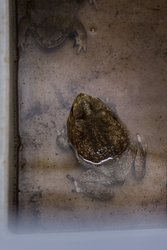
Weber has also done work on an African toad which can also survive in a dormant state, and which is interesting on account of its ability to survive with a high concentration of urea in the blood.
And s 40.300 year old woolly mammoth
Weber has participated in expeditions all over the world, including the Amazon rainforest and the Andes Mountains. Most recently, he was one of just a few Western scientists on an international team of scientists who examined the remains of a 40,300 year old woolly mammoth. The mammoth was discovered in northern Siberia in 2014.
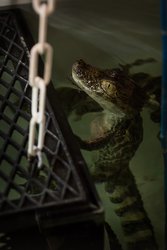
Weber has also studied the circulatory system of the caiman, a very small South American crocodile.
- Roy E. Weber's CV
Roy Weber, professor of zoophysiology at Aarhus University, turned 80 on Sunday. He has been professor emeritus for the past ten years. That is, as ‘emeritus’ as it’s possible to be while continuing to publish several scientific papers a year. Not that Weber, a modest person, would draw attention to that achievement himself; rather, it’s Professor Tobias Wang, who heads the section for animal physiology at the Department of Bioscience in Aarhus.
“Roy has actually published five articles a year for the past five years,” Wang reveals.
Decisive influence on zoophysiology research
For several months, Wang has been in the process of organising a conference in Weber’s honour at Sandbjerg Estate. The conference, entitled OXYGEN, will take place over three days here in May. Eighty scientists and students from all over the world will come together to discuss Weber’s field of research: haemoglobin, oxygen transport and respiration physiology in all manner of different animals.
Dr Wang minces no words when describing the decisive influence Weber’s work has had on zoophysiology research at Aarhus University.
“As a professor at the section in the 90s and 00s, Roy succeed in attracting a lot of large grants, and he also attracted a lot of Danish and international guests who created a really good milieu for the students and the junior researchers,” Wang explains.
He continues:
“Over his past ten years as emeritus, Roy has remained active in his field, and he’s also participated actively in seminars and other academic activities. He often acts as a sounding board for ideas, and our students enjoy that there’s an older, experienced scientist who has time to talk physiology with them.”
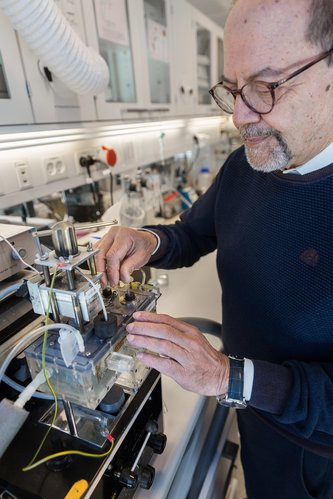
A leading scientist without sharp elbows
One former student who has benefitted from Weber’s accessibility is Angela Fago, who is now a professor of zoophysiology and deputy department head at the Department of Bioscience.
“Roy has been a fantastic mentor for a lot of students and junior researchers, including myself. He’s always given his students the space to develop in the best possible way, because he has the ability to be present without being dominating.”
And in her academic collaboration with Weber over the years, Fago has also noted how Weber has handled his prominent position in his field with approval.
“Roy has demonstrated how you can certainly be one of the leading scientists and make your way in the world of science without having sharp elbows. He’s extremely well-liked by his colleagues, and he knows how to make everyone feel at ease in his company,” says Fago.
University of Leiden, summer of 1959
But Weber’s story is not just about the path towards international academic success at the top of his field. It’s also about how growing up under apartheid affects a person. But before we travel back to his childhood and youth in South Africa, let’s stop by a decisive moment in his early manhood. It’s autumn, and 21-year-old Weber has just started studying at the University of Leiden i Holland on scholarship.
The professor and his words
Weber was not among the students who drew the most attention to themselves, which didn’t escape the notice of Henk Wolvekamp, a highly respected zoologist. And a man with great insight into human nature, as young Weber would learn, when the professor gently and patiently teased out an explanation for his shyness.
Many years later, Weber recalls: “I was coloured, after all, and I was kind of...”, hunching his shoulders in a gesture expressive of both self-protection and shame as he remembers his demeanour as a young man.
One day later on, when Weber was sitting in Wolvekamp’s office discussing his background with him again, the professor said:
”Weber, wij zijn niet wit, wij zijn niet zwart; wij zijn menzen.”
Which Weber translates:
“Weber, we are not white, we are not black; we are people.”
After a moment, he continues:
And I embraced that.”
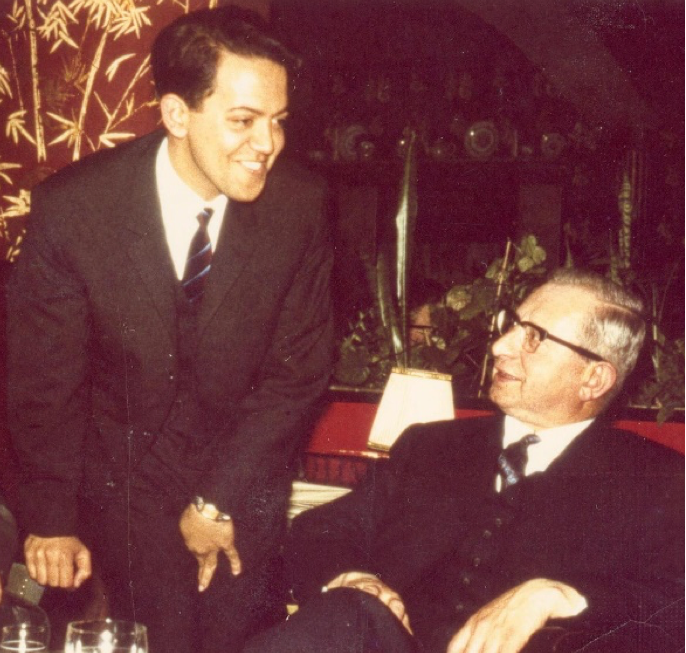
Roy Weber (standing) with Professor Henk Wolvekamp (right), who would become an important figure in Weber’s life during his student days at the University of Leiden in Holland from 1959 to 1965. Wolvekamp was a passionate socialist, and on May Day he would march up and down the corridor of the department with the red flag held high singing The Internationale.Which was quite a sight for a young student like Weber, who wasn’t used to hearing the world ‘socialism’ said out loud. Private photo
Fishing, catching frogs and shooting snakes
Weber grew up with his sister and brothers in the idyllic village of Berea in western Cape Province in South Africain the 1940s.
“I only have happy memories of my childhood,” Weber says. And it was as a child that he first began to get interested in biology; he spent his time after school fishing, catching frogs and shooting snakes with the other children. All of whom went barefoot. Shoes were only for Sundays.
Everyone in the village was coloured, the descendants of mixed marriages between African tribespeople and white immigrants. The Webers were well-educated and well-off. They lived in a thirteen-room house (without electricity or running water), had servants and the only car in the village. They started up the car for the trip to the larger town of Genandendal, where the Moravian Church had founded a mission in 1737.
The Webers were members of the congregation, and Weber’s father served as pastor of the church in Berea. He also taught at the local school, which he continued to do even after the family moved to Elim, a larger town. Young Roy spent a lot of time at church, the social hub of the city. Along with the other boys in the oldest class at school, he was also responsible for bearing the casket at the funerals of schoolchildren.
“Some of my classmates died, typically of tuberculosis, and we were sad, naturally. But the next day we were happy again. We learned that death is part of life,” remembers Weber.
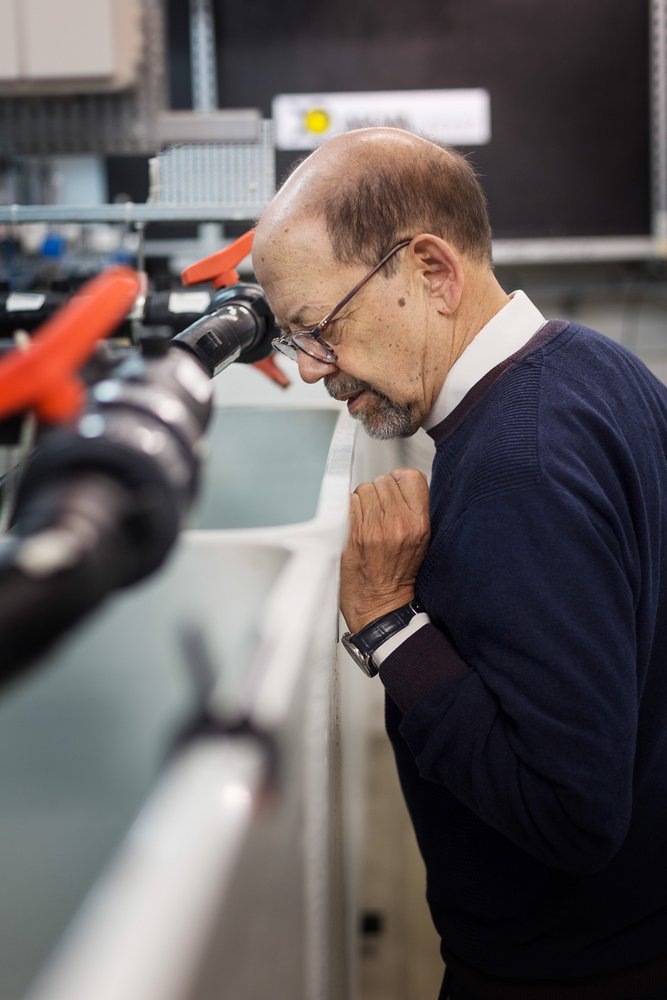
Young under apartheid
At the age of 13, Weber left the security of his family’s home to attend South Peninsula High School, an exclusive school for coloured children in Cape Town. The year was 1951, and apartheid had been introduced three years earlier when the Nationalist Party took power after a victory in the 1948 parliamentary elections.
So there was more need than ever before for a man like the school’s headmaster Adrian G. de Villiers, who often greeted students in the corridors of South Peninsula High School with the encouraging slogan “Stand proud and speak up!”
But despite this encouragement, it was no small matter to stand proud and speak one’s mind in a city where even the most banal aspects of life were constant reminders of apartheid.
“I never ate at a restaurant in South Africa when I was young,” says Weber – blacks and coloureds were not allowed.
Blacks and coloureds were also forced to use a special back entrance, for example at the post office, and they always had to carry an identity card which they could be forced to show at any time when visiting the ‘white areas’.
“I may not have dared to say what I thought. But I intentionally made a sinister, scowling face when I had my photo taken for my identity card, and that was my quiet rebellion,” chuckles Weber.
The select few coloureds at university
He was given the opportunity to continue on to university in Cape Town, as one of just a few coloureds. But he felt torn.
“I felt guilty because I could go to university while some of my friends didn’t have that opportunity. And because I could go places where friends and some of my family members who were darker-skinned than me couldn’t go.”
There were no black students at the University of Cape Town.
“I don’t remember whether it was expressly forbidden for blacks to attend university. But in any case, there weren’t any, and if nothing else this was because they lived under such miserable conditions that they had no chance of earning the marks everyone had to have to get into university,” Weber says.
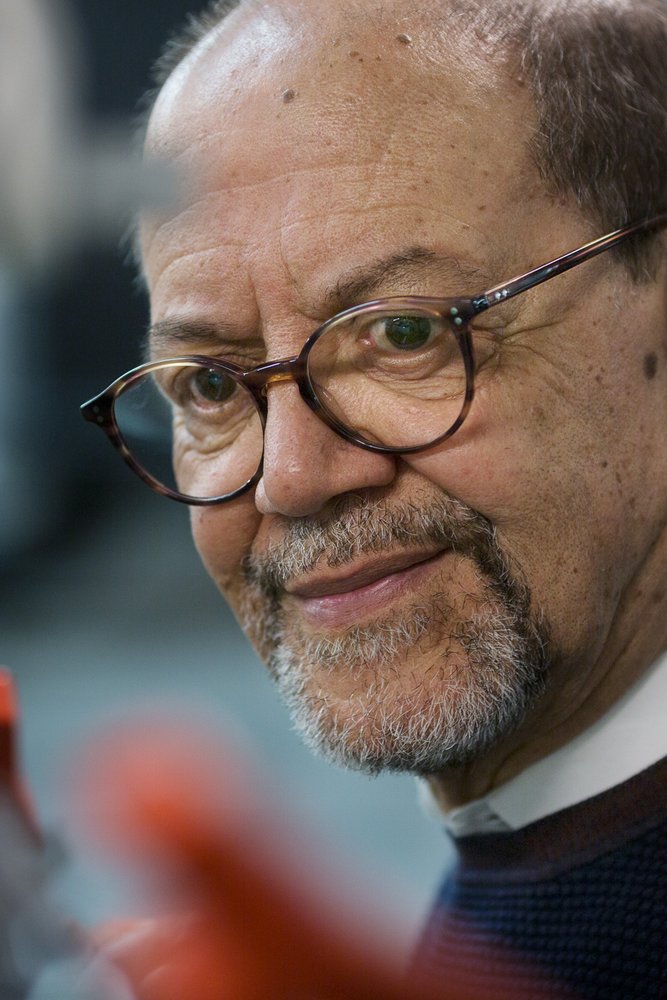
Demonstrations and imprisonment
The teachers and students at the University of Cape Town were passionately anti-apartheid, and they marched in protests with thousands of people. Taking to the streets to show your opposition was a brave act. Not least for blacks and coloureds, who risked imprisonment for up to six months without trial. White protesters were also arrested, and it was common practice for the police to release protesters after six months – only to arrest them again immediately afterwards for another six-month prison term. Without having to provide any justification whatsoever.
“I participated in the protests, and I freely admit I was afraid,” says Weber.
Young Roy attended to his university studies and tried to make the best of things despite the oppression of the regime, like everyone else. But one day, he saw a notice at the university which gave him hope of a freer life: applications were being accepted from coloured students for a scholarship to a university in Holland. He applied, got the scholarship, and in 1960, Weber set off for Europe.
“I only got my passport a few days before I was to leave. I hurried to Elim to say goodbye to my family before I boarded the ship, and I didn’t feel safe until we were in international waters.”
Debate, thought and clubs
“It was fantastic!”
Weber lights up when he thinks back on those days – for the first time in his life, he could participate actively in debate, get elected to the steering committee of a student association and not least speak his mind freely – as a free man.
“I was quite cautious in the beginning, but I gradually began to understand that I could relax in my new country. We could even talk about socialism, a word you didn’t say out loud in South Africa. We would debate late into the night, and we were a bit tired when we got to class in the morning,” remembers Weber.
Field studies in 1960s Copenhagen
After six years in Holland, in 1966, Weber got a one-year postdoc at the University of Copenhagen.
“And that was also fantastic!” he exclaims.
But this time it wasn’t so much intellectual discussions that kept Weber up all night – but field studies in Copenhagen’s night life. Because as the sly expression in his eyes hints, Weber was a young man who had his priorities here in life straight:
“I had a project I was assigned to do for the department that had sent me on my way. And I completed it. But then absolutely nothing more!” Her name was Jette, the woman he danced with at a restaurant one evening. But that was all she told him before she disappeared into the darkness. But as we know, he had his priorities straight: so after a week of searching, he found her again, and she was sitting beside him in the passenger seat of his small car when he returned to Holland three weeks later.
Professor at Aarhus University
In 1972, Weber was offered an associate professorship at Aarhus University, and the young couple – now married – returned to Denmark. Six years later, he took up a professorship at Odense University (now the University of Southern Denmark, ed.), and in 1988, he returned to Aarhus University as a professor at the then Department of Zoology and Zoophysiology.

Champagne brunch in the cafeteria at Physics and Astronomy
On Sunday, Weber invited colleagues to a champagne brunch in the cafeteria on the eighth floor of the Department of Physics and Astronomy to celebrate his birthday. In the invitation, he described his birthday wishes:
“Only small gifts (max. 100 kr.) towards good experiences –alternatively, pleasedonate to Save the Children, Doctors Without Borders or the victims of the war in Syria. Every little bit helps...”
Even though Weber has just celebrated his 80th birthday with plenty of champagne corks popping, he has no plans to withdraw from research to spend a quite retirement in his flat next to the Botanical Gardens. He has entirely too many projects on the drawing board for that.
“I would also like to get around to writing my memoirs,” he says, not least with reference to the subject of his childhood and youth under apartheid. Because although he took his professor’s words to heart – on the importance of seeing yourself as a person, first and foremost – the oppression he suffered in the first many years of his life has definitively influenced the rest of his existence.
“I still perceive myself as someone who’s split between two worlds,” says Weber:
“And so I would like to contribute to reminding the world what it was like under apartheid, which only ended as recently as 1994. I’m a bit frightened of the neo-nationalism I see popping up everywhere. Including in Europe. We have to warn against it, and we have to do what we can to combat it.”
Translated by Lenore Messick
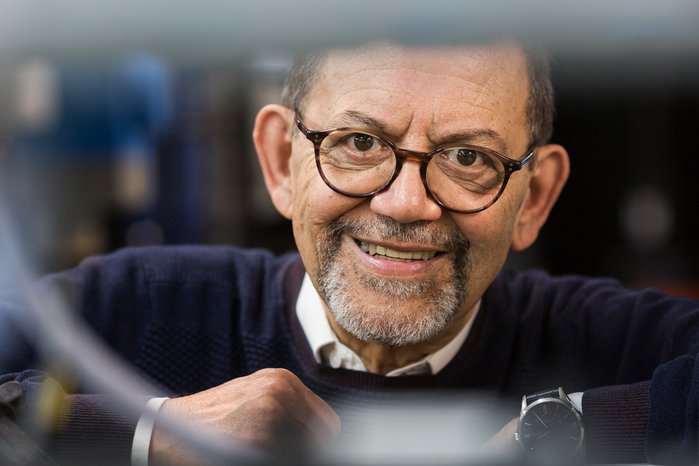
Emeritus Professor Roy E. Weber’s research
Emeritus Professor Roy E. Weber carries out basic research on the mechanisms in the blood of animals – mechanisms which supply the body with oxygen. Weber’s research has produced insights which can be used in applied research. For example to improve the treatment of patients with poor lung function.
Birds
Weber has explored how the circulatory system work in animals who live under extreme conditions in nature. For example, he has studied birds which fly at an altitude nine of kilometres above the Himalayas, where the air is extremely thin. He has also studied vultures, the only birds capable of flying at altitudes higher than 11 km.
Fish
Weber has also explored a species of lungfish in the rivers of Africa. In periods of drought, lungfish can survive in a dried-out lump of mud for up to seven years – with no contact with water. The lungfish become active again when it starts to rain.
”We call it instant fish! Just add water!” chuckles Weber.

Weber has also done work on an African toad which can also survive in a dormant state, and which is interesting on account of its ability to survive with a high concentration of urea in the blood.
And a 40.300 year old woolly mammoth
Weber has participated in expeditions all over the world, including the Amazon rainforest and the Andes Mountains. Most recently, he was one of just a few Western scientists on an international team of scientists who examined the remains of a 40,300 year old woolly mammoth. The mammoth was discovered in northern Siberia in 2014.

Weber has also studied the circulatory system of the caiman, a very small South American crocodile.
- Roy E. Weber's CV

